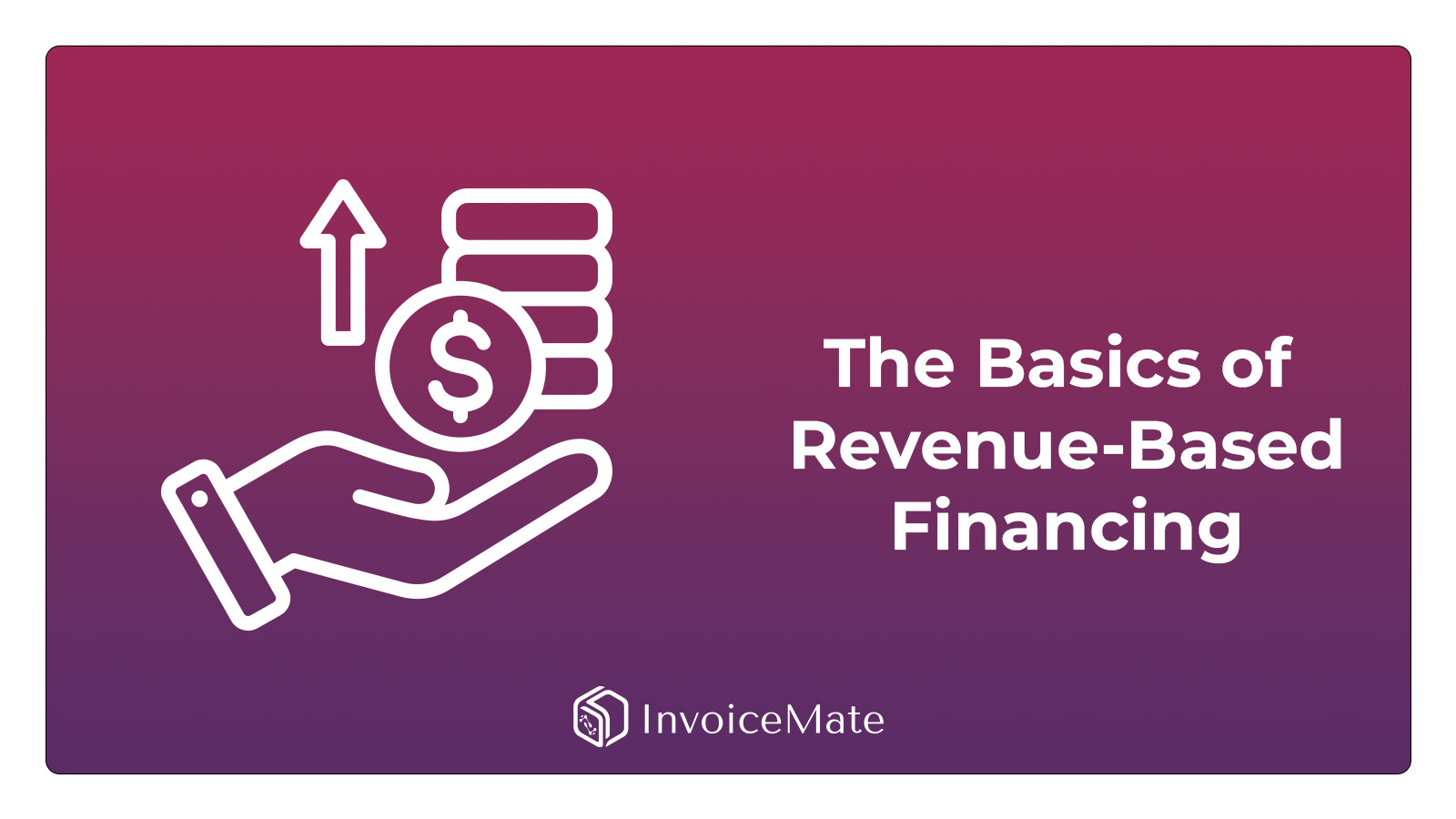Connect With Us
The Basics of Revenue-Based Financing

In the dynamic business financing landscape, the conventional methods of funding businesses are facing challenges from new and creative alternatives that put flexibility and interest alignment first. One such model that is becoming more and more popular is revenue-based financing (RBF), which provides a special option for companies seeking capital without the limitations of conventional financing. In the lines to follow, we will explore the nuances of revenue-based financing, including its benefits, drawbacks, and factors to take into account for companies looking to expand financially.
Understanding Revenue-Based Financing (RBF)
Fundamentally, revenue-based financing is a funding strategy in which a company obtains finance from a lender or investor in return for a portion of its anticipated revenue in the future. By breaking away from the traditional loan structure, which typically has fixed monthly payments, businesses can customize their repayment plans to better suit their revenue sources and create a more flexible and long-lasting financial arrangement.
How it Works
Investment Agreement
The business signs a contract with a lender or investor outlining the terms of the investment, including the share of future profits that the company will give the investor.
Repayment Structure
When a business’s monthly or quarterly revenues are low, the payback amount decreases; when revenues are high, the repayment amount increases. This is in contrast to typical loans, which have set monthly payments.
Total Repayment Cap
RBF agreements typically have an upper limit that must be repaid. The financial arrangement ends when the agreed-upon maximum is reached, giving businesses an accurate idea of how much financing will cost overall.
Term Length
An RBF arrangement might have a defined time or last until the entire payback cap is met. The term length of the agreement is often determined by multiplying the average monthly revenue.
Advantages of Revenue-Based Financing
Flexibility in Repayments
During slower months, when revenue is lower, the repayment pressure decreases, giving the business breathing room. RBF gives businesses the freedom to regulate their repayments in line with their revenue fluctuations.
Syncing of Interests
Through a symbiotic partnership where success is shared, RBF matches the interests of the investor and the business. The investor gains when the firm performs successfully.
No Fixed Payments
In times of economic turbulence, the lack of fixed monthly payments relieves financial pressure. Companies are not constrained by set payment dates, which enables more flexible financial administration.
Ease of Access to Capital
Businesses with seasonal or fluctuating revenue streams may find RBF to be a compelling alternative since it offers access to funding without requiring substantial assets or conventional collateral.
No Equity Sharing
Funding can be obtained by businesses without reducing their equity through RBF, unlike equity financing, which requires giving up ownership or control of the company.
What Businesses Need to Consider
Capital Cost
Although RBF offers flexibility, businesses should carefully analyze the cost implications of RBF, as it may be more expensive than standard loans when taking into account the entire amount repaid.
Impact on Profitability
Regular repayments based on revenue have the potential to affect a company’s short-term profitability, particularly in times of rapid expansion. Companies should evaluate the possible effects on their financial performance.
Financial Transparency
Since the repayment structure is linked to revenues, businesses need to keep their financial reporting transparent. A smooth RBF arrangement depends on accurate financial reporting.
Compliance
When choosing RBF investors or lenders, businesses should do extensive due diligence. A mutually advantageous agreement depends on understanding the parameters, which include the percentage of income and the total payback cap.
Conclusion
When it comes to the financial tools that businesses have at their disposal, revenue-based financing stands out as a compelling alternative. Its dynamic and flexible nature accommodates the modern business landscape and offers a symbiotic relationship between investors and businesses. Revenue-based financing offers access to capital without compromising control, which makes it a pathway to growth. However, like any financial arrangement, careful consideration of the terms and implications is crucial to ensuring a successful and mutually beneficial partnership. In the age of financial innovation, revenue-based financing is a beacon for businesses looking to realize their potential for growth and find a way to grow.
InvoiceMate Revenue-Based Financing
InvoiceMate’s Revenue-Based Financing Solutions allow financing institutions and SMEs to scale their financing according to business growth. Explore the revenue-based funding possibilities with InvoiceMate. Our robust financing enabler allows financing institutions to secure more customers with unmatched transparency. No more tedious and costly compliance procedures. InvoiceMate’s innovative blockchain and AI-powered compliance solution, KYI (Know Your Invoice), offers unparalleled advantages for both SMEs and financing institutions. InvoiceMate’s revenue-based financing enablement allows SMEs to avail themselves of financing opportunities like never before. Their creditworthiness is automatically reflected in their ongoing business.
Learn more about InvoiceMate
